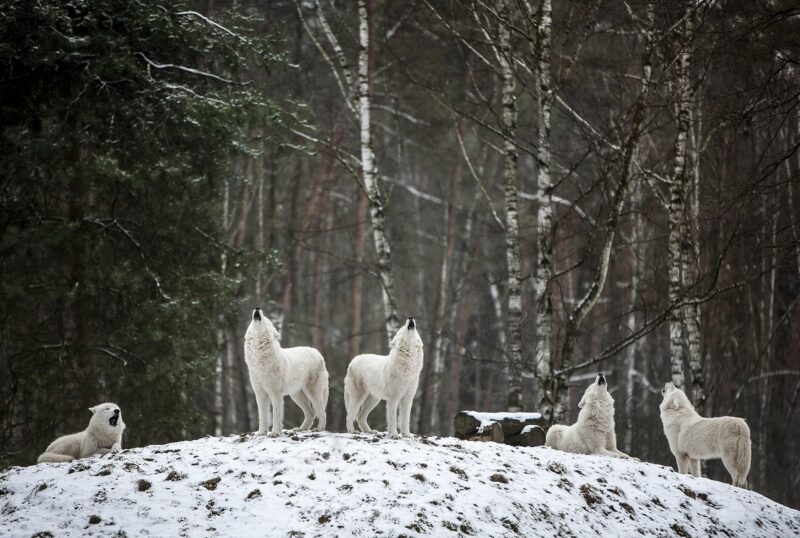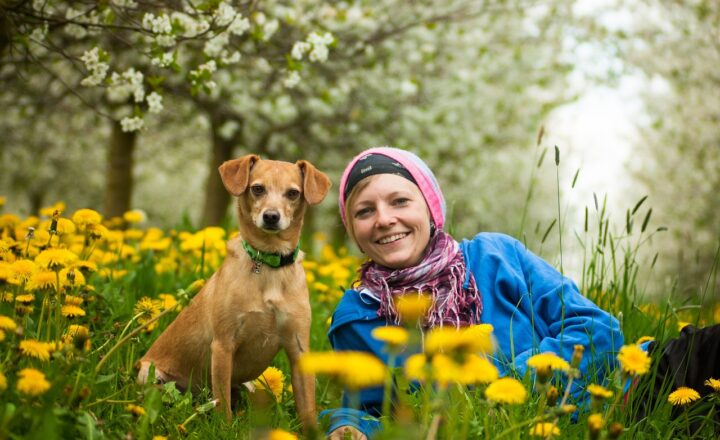The Evolution of Domesticated Animals: How Wolves Became Dogs
November 12, 2024

Dogs, often referred to as “man’s best friend,” have a fascinating and intricate history that traces back to their wild ancestors—the wolves. The journey from wolves to domesticated dogs provides astonishing insights into animal evolution, human culture, and the bond between species. This article aims to explore this evolution, beginning with the origins of dogs in the wild and progressing to the myriad roles they play in contemporary society.
1. The Origins of Domestic Dogs
The domestication of dogs is believed to have occurred between 20,000 to 40,000 years ago. Genetic studies suggest that dogs descended from gray wolves, and this process likely began when early humans formed a symbiotic relationship with these wild canines.
- Mutual Benefits: As humans settled into agricultural communities, garbage heaps began to form. Wolves, attracted by the leftover food, came closer to human settlements. The friendlier and less aggressive wolves were likely tolerated by humans, creating a mutually beneficial relationship.
- Selection for Traits: Over time, humans began to select for traits in wolves that made them more appealing as companions. Friendliness, reduced aggression, and the ability to communicate effectively with humans became advantageous traits that were naturally selected over generations.
This initial bond set the stage for the long and complex journey of domestication.
2. The Process of Domestication
The domestication process was gradual, involving many generations of selective breeding. Through this process, certain behaviors and physical traits were cultivated to develop the wide variety of dog breeds we see today.
- Behavioral Changes: Domesticated dogs were found to exhibit a natural inclination toward humans—a trait not found to the same extent in wolves. This behavioral change was pivotal for forming the deep-seated bond we see in human-canine relationships today.
- Physical Changes: Alongside behavioral changes, physical attributes began to vary significantly, leading to diminutive sizes, different fur types, and various coat colors. Changes in skull size, ear shape, and tail structure also emerged during this process due to selective breeding and environmental influences.
As these changes took hold, certain dog breeds were developed for specific roles, demonstrating the adaptability of canines in a variety of environments and lifestyles.
3. Dogs in Ancient Cultures
Dogs did not merely serve as companions but played vital roles in the development of early human societies. Different cultures valued dogs for their unique skills and traits.
- Hunting Partners: Early civilizations recognized the hunting prowess of dogs. Breeds such as the Saluki and Greyhound were cultivated for their speed and tracking abilities, assisting humans in hunting for food.
- Guardians of Livestock: Pastoral communities relied on dogs for protection. Breeds like the German Shepherd and Belgian Malinois were specifically developed to guard sheep and cattle from predators, showcasing the canines’ loyalty and intelligence.
- Myth and Symbolism: Throughout history, dogs have appeared in mythology and religion. For instance, in ancient Egypt, they were revered and often depicted in art. Anubis, the god of the afterlife, is commonly associated with a canine figure.
These roles solidified the dog’s position in human culture, rendering them indispensable companions throughout history.
4. The Impact of Modern Breeding
In the modern era, the role of dogs has expanded dramatically due to intentional breeding practices. The phenomenon of selective breeding spanning the last few centuries has produced over 340 recognized breeds worldwide, each with distinct appearances and behaviors.
- Specialization in Breeds: Breeds were developed not only for companionship but also for specialized tasks. For example, Border Collies are prized for herding; Doberman Pinschers are popular as guard dogs; and Labrador Retrievers excel in service roles, demonstrating their capacity for diverse work.
- Health Considerations: Modern breeding practices, however, have led to a set of challenges, including health issues due to inbreeding and the narrowing of genetic diversity. Breeds like bulldogs and pugs commonly face breathing difficulties due to selectively bred physical traits, prompting a growing concern among veterinarians and pet lovers alike.
As a result, discussions around responsible breeding and the promotion of mixed breeds have gained traction in contemporary society.
5. The Evolution of the Human-Dog Bond
The bond between humans and dogs has evolved dramatically, influencing our society and culture.
- A New Role: Emotional Support: Dogs are increasingly regarded as emotional support animals, offering companionship and therapeutic benefits to people. Studies have shown that interacting with dogs can reduce stress, anxiety, and depression, highlighting their importance in modern mental health awareness.
- Working Dogs: Beyond companionship, dogs fulfill critical roles as service animals, therapy dogs, and search-and-rescue partners. Breeds are trained to assist those with disabilities, find missing persons, and improve the quality of life for many individuals in need.
- Cultural Representations: Dogs have also permeated popular culture through films, television, and literature, shaping our perceptions. Characters like Snoopy and Lassie have become cultural icons, inspiring affection and recognition of the unique qualities dogs contribute to our lives.
This ever-evolving relationship emphasizes the need for respect, understanding, and responsible care for our canine companions.
6. Conclusion: The Future of Dogs in Society
As we look to the future, the evolution of domesticated animals, particularly the transformation from wolves to dogs, offers invaluable lessons about collaboration, respect, and companionship across species. Our experience with dogs teaches us about responsibility and the immense benefits of fostering close partnerships with other species.
We must prioritize proper breeding practices, promote the welfare of all animals, and invest in the health of our canine companions. As our understanding of their needs deepens, the bond between dogs and humans can only grow stronger, shaping a future where dogs continue to play an integral role in our lives and societies.
With ongoing research into canine genetics and behavior, we stand to learn even more about the capabilities of dogs and how best to nurture and support them as our loyal companions. The journey from wolves to dogs marks just the beginning of an incredible story—a story that is still being written every day as dogs carve out their unique place in the fabric of human life.







